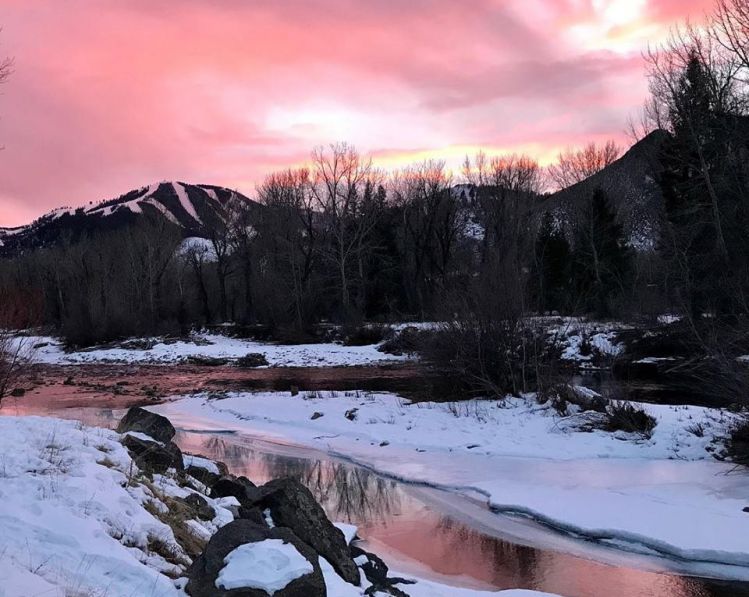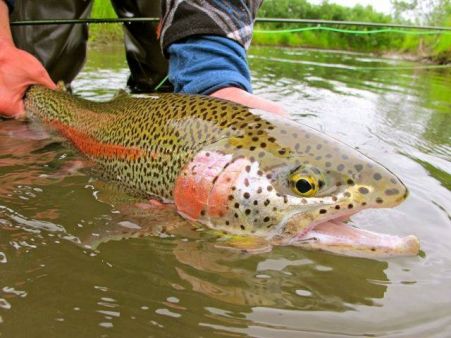From: 01/10/2018
To: 01/10/2018
Type of Water: Freshwater
Species: Brown trout, Brook trout, Cutthroat, Bull trout, Grayling , Whitefish, Fine Spotted Cutthroat
"A warm January, a cold May." ~Welsh Proverb
To date, January has been warm, and what May will yield has yet to be seen. While proverbs portend general truths based on common experience, the weather has been everything but common of late. Another proverbial truth: the only certainty in forecasts is that they are uncertain. With the Big Wood drainage sitting at 67% of average, rest assured that there is a lot of winter yet to come before we can prognosticate about water flows in May. And at the moment, the fishing is fantastic. With the holiday season behind us, solitude on the river is easy to find.
Big Wood
One positive outcome of the recent flood is that it has provided excellent habitat for midge larvae and other insects on all the newly downed trees deposited throughout the r View more..."A warm January, a cold May." ~Welsh Proverb
To date, January has been warm, and what May will yield has yet to be seen. While proverbs portend general truths based on common experience, the weather has been everything but common of late. Another proverbial truth: the only certainty in forecasts is that they are uncertain. With the Big Wood drainage sitting at 67% of average, rest assured that there is a lot of winter yet to come before we can prognosticate about water flows in May. And at the moment, the fishing is fantastic. With the holiday season behind us, solitude on the river is easy to find.
Big Wood
One positive outcome of the recent flood is that it has provided excellent habitat for midge larvae and other insects on all the newly downed trees deposited throughout the river. In the winter, midges make up a majority of a trout's diet and already there are decent numbers of adult midge clustering on the surface. This is a phenomenon typically only seen in late February and March. This bodes well for what is to come as the days get longer and the rainbow population begins to feed with abandon in preparation of the spring spawn. In the meanwhile, be sure to take plenty of midge dries in addition to the usual subsurface midge patterns for winter angling. For dries, have a selection of trailing shuck midges, Griffiths Gnats, and high-vis parachute midge patterns in size 18-24. Also be prepared to fish dry dropper or Euro style. For nymphs, try Rubber Leg Stones, King Prince Nymphs, Zebra Midge, Bishop's Dynamite, Egan's Frenchy, the Red Dart, or the Iron Lotus.
The Lost Below Mackay
Trail Creek Pass is closed for the season, so anglers heading to the Lost will need to go through Carey and over to Arco to get to Mackay. The flows on the Lost continue to come down and are now holding at 200 CFS. This is a good flow for wading and if you are looking for a full day of fishing on a fantastic tailwater this is the place. Nymphing the slow buckets and tailouts will be the most productive with small Zebra Midge and Beatis patterns.
South Fork of the Boise
The South Fork is holding steady at 306 CFS. Look for a short window of dry fly activity once the sun hits the water. Have a good selection of midge and Baetis patterns in size 20 to 24 and fish long, light leaders down to 6 or 7X. Nymphing remains most productive with Red San Juan Worms, Rubber Leg Stones, Caddis Larva as well as small Zebra Midge and Baetis Nymphs. As always, be prepared for winter travel; a vehicle with four wheel drive, studded snow tires, and chains is advisable.
Silver Creek
The Conservancy portion of the Creek is closed until opening day the end of May of 2018; however, from the Highway 20 bridge down through the Willows and the Point of Rocks the fishing will remain open until the end of February. Your best action will come on nymphs and streamers during the warmest part of the day. For nymphs, try a beaded or non-beaded pheasant tail, a Zebra Midge, or a WD40 in size 20 or 22.






